The Arctic region covers over one-sixth of the earth’s landmass, and is set to play an increasing role in shaping the course of world affairs. The still less explored region is rich in exploitable natural resources, especially gas and oil and marine living resources. It is estimated that the Arctic could be home to nearly 20 percent of the world’s oil and natural gas. The Arctic Ocean, around Earth’s North Pole is full of floating ice, with ridges up to 20m thick. Global industrialisation has raised temperatures because of increased carbon dioxide and other greenhouse gas emissions. Therefore, the glaciers are rapidly melting. The 2021 minimum sea ice extent was nearly 4.724 million square kilometres, which is around 1.6 million sq km lower than the long-term average. The Arctic sea ice reduction has been at a rate of almost 13 percent per decade. At this rate, the Arctic could be ice-free in the summer by 2040. Melting ice will raise the sea level and submerge many island territories and coastal cities. So clearly, climate change, and global warming are the main issues engaging the entire world. Melting Ice and New Sea Routes The shrinking of ice sheets is resulting in new water bodies getting created. Some of the countries surrounding the Arctic Ocean have started claiming these water bodies and want to exploit the resources, especially oil and natural gas. The melting ice is also creating more maritime trade routes. Normally they should be treated as international waterways, but the territorial claims may restrict open access. It could open a sea route in northern parts of Canada, connecting the Pacific and Atlantic oceans in summer months. Similarly, the Chinese are looking at an Arctic route to Baltic States and Europe. The shortened sea routes would also reduce transportation cost. The Arctic Council Unlike Antarctica, which is uninhabited and administered by a treaty of 1959 that allows only peaceful activities, there is no such treaty covering the Arctic. The Arctic Council was set up in 1996 by the Ottawa declaration. It is a grouping that looks into issues faced by the Arctic countries and the residents of the Arctic. The United States, Canada, Denmark, Iceland, Norway, Sweden, Finland, and Russia are the eight countries having territory within the Arctic Circle. All are members of this council. The council provides for having countries with observer status. In 2011, the Council clarified its criteria for admission of observers. The critical requirement was that the applicants must “recognise Arctic States’ sovereignty, sovereign rights and jurisdiction in the Arctic” and “recognise that an extensive legal framework applies to the Arctic Ocean”. The Himalayas are often considered the ‘Third Pole’ with commonality of elements with the Arctic and Antarctic. It was thus important for India to have a foothold in all three. In May 2013, India became the 11th country which was made a permanent observer at the Arctic Council. [caption id=“attachment_11504601” align=“alignnone” width=“516”] Thule American Air Base in Northern Greenland in 1966. Image Source: Time.com[/caption] Militarisation and the Arctic Cold War Both Russia and the United States have for long placed weapons, including Russian nuclear deterrence, in the Arctic region. Both had Arctic military bases and had placed significant surveillance systems in the region. Effectively, the Arctic is already militarised. Russia has been operating nuclear-powered icebreakers in the Arctic for some time. The Arctic Military Environmental Cooperation (AMEC) agreement between Russia, the US and Norway did help decommission a significant number of former Soviet nuclear-powered submarines. The US also reduced the assets based in Alaska. Yet control over the Arctic by many countries, especially the US and Russia has begun a new Cold War. With the West and Russia drawn into a fresh showdown over Ukraine since 2014, the once cooperative approach has started breaking down. [caption id=“attachment_11504611” align=“alignnone” width=“520”]
 Russian Nuclear Ice Breaker ‘Yamal’. Image Source: Wikipedia[/caption] Arctic sea routes Higher levels of ice melting due to global climate change has begun opening in the Arctic region, more so in summer months, and for longer periods of time. There are three main routes. The Northern Sea Route (NSR) along the arctic coast of Russia. Ice clears up here first and therefore is available for longer duration. It also has the highest commercial potential. The route reduces the maritime distance between East Asia and Europe from 21,000 km via the Suez Canal to 12,800 km. It implies transit time saving by 10-15 days. NSR was used extensively for natural resource extraction and transportation during the Soviet Era. It was also used for military resupplies. In 2009, two German ships led by a Russian icebreaker made the first commercial journey across the NSR from Busan in South Korea, to Rotterdam in Netherlands, establishing good commercial prospects. [caption id=“attachment_11504621” align=“alignnone” width=“511”]
Russian Nuclear Ice Breaker ‘Yamal’. Image Source: Wikipedia[/caption] Arctic sea routes Higher levels of ice melting due to global climate change has begun opening in the Arctic region, more so in summer months, and for longer periods of time. There are three main routes. The Northern Sea Route (NSR) along the arctic coast of Russia. Ice clears up here first and therefore is available for longer duration. It also has the highest commercial potential. The route reduces the maritime distance between East Asia and Europe from 21,000 km via the Suez Canal to 12,800 km. It implies transit time saving by 10-15 days. NSR was used extensively for natural resource extraction and transportation during the Soviet Era. It was also used for military resupplies. In 2009, two German ships led by a Russian icebreaker made the first commercial journey across the NSR from Busan in South Korea, to Rotterdam in Netherlands, establishing good commercial prospects. [caption id=“attachment_11504621” align=“alignnone” width=“511”]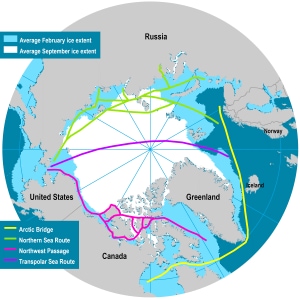 Arctic Sea Routes. Image Source: transportgeography.org[/caption] The North West Passage (NWP), the sea route between the Atlantic and Pacific oceans crossing Canada’s Arctic Archipelago began being used first in 2007. It may open for more regular use soon. While Canada claims it as an internal waterway, the United States and various European countries claim that it is an international strait and transit passage, and must allow free and unencumbered movement. This route between East Asia and Western Europe would be around 13,600 km vis-à-vis 24,000 km via the Panama Canal. But the parts of the route are just 15 metres (49 ft) deep, thus reducing viability. But Chinese seem still interested in using this passage to the eastern United States as the Panama Canal too has ship size and tonnage restrictions. The Transpolar Sea Route (TSR) would use the central part of the Arctic to directly link the Strait of Bering and the Atlantic Ocean of Murmansk. This route is hypothetical as it involves ice-free conditions that are not yet observed. The Arctic Bridge linking Murmansk port in Russia to Narvik in Norway and further to Churchill port in Canada is mostly used for the grain trade. Typically, it can’t be called a trans-Arctic route. China: A new player in Arctic As China grew into a significant power, it has been showing interest in the Arctic region. It has been building military and other capabilities to defend its interests in the region and has an aggressive Arctic policy. Denmark, backed by the US, refused China who offered to buy an old military base in Greenland, and build an international airport. China’s Arctic forays are being monitored and challenged by the US. China released its official Arctic Policy paper in January 2018. It covers foreign relations with Arctic countries. China has interests in the Arctic to create infrastructure for research, military, and other purposes. It wants to exploit resources. It has plans for a Polar Silk Road, through the Arctic to help expedite global shipping delivery. China considers itself as a “Near-Arctic State” and a major stakeholder in the Arctic. While many observer nations consider themselves as “near-Arctic” nations, China claims to be a continental state that is closest to the Arctic Circle. As far back as 1925 China had become a signatory of Spitsbergen, later called the Svalbard Treaty. The treaty allows members to engage in a certain amount of mining, while recognising Norway’s sovereignty. [caption id=“attachment_11504651” align=“alignnone” width=“527”]
Arctic Sea Routes. Image Source: transportgeography.org[/caption] The North West Passage (NWP), the sea route between the Atlantic and Pacific oceans crossing Canada’s Arctic Archipelago began being used first in 2007. It may open for more regular use soon. While Canada claims it as an internal waterway, the United States and various European countries claim that it is an international strait and transit passage, and must allow free and unencumbered movement. This route between East Asia and Western Europe would be around 13,600 km vis-à-vis 24,000 km via the Panama Canal. But the parts of the route are just 15 metres (49 ft) deep, thus reducing viability. But Chinese seem still interested in using this passage to the eastern United States as the Panama Canal too has ship size and tonnage restrictions. The Transpolar Sea Route (TSR) would use the central part of the Arctic to directly link the Strait of Bering and the Atlantic Ocean of Murmansk. This route is hypothetical as it involves ice-free conditions that are not yet observed. The Arctic Bridge linking Murmansk port in Russia to Narvik in Norway and further to Churchill port in Canada is mostly used for the grain trade. Typically, it can’t be called a trans-Arctic route. China: A new player in Arctic As China grew into a significant power, it has been showing interest in the Arctic region. It has been building military and other capabilities to defend its interests in the region and has an aggressive Arctic policy. Denmark, backed by the US, refused China who offered to buy an old military base in Greenland, and build an international airport. China’s Arctic forays are being monitored and challenged by the US. China released its official Arctic Policy paper in January 2018. It covers foreign relations with Arctic countries. China has interests in the Arctic to create infrastructure for research, military, and other purposes. It wants to exploit resources. It has plans for a Polar Silk Road, through the Arctic to help expedite global shipping delivery. China considers itself as a “Near-Arctic State” and a major stakeholder in the Arctic. While many observer nations consider themselves as “near-Arctic” nations, China claims to be a continental state that is closest to the Arctic Circle. As far back as 1925 China had become a signatory of Spitsbergen, later called the Svalbard Treaty. The treaty allows members to engage in a certain amount of mining, while recognising Norway’s sovereignty. [caption id=“attachment_11504651” align=“alignnone” width=“527”]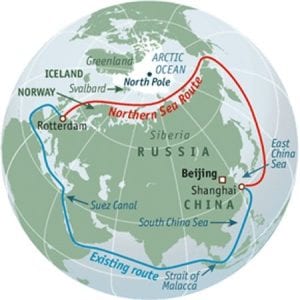 China’s Northern Sea Route. Image Source: businessinsider.com[/caption] China has set up a Polar Research Institute in Shanghai. They began Arctic expeditions in 1984. In 1996 China joined the International Arctic Science Committee. They have a series of research vessels including the Chinese polar icebreakers MV Xue Long. China built the Arctic Yellow River station in 2004. In 2018, Shanghai based, COSCO Shipping Corporation Limited made eight transits through the Arctic between Europe and China. China insists that their one-fifth of the world’s population must benefit from the Arctic resources. China spends more than the US on Arctic research. China’s “Polar Silk Road” is a joint initiative with Russia and was launched in 2018. Like Russia, China also wants to have nuclear-powered icebreakers in the Arctic, becoming only the second country to do so. Through the Arctic shipping route, the maritime shipping distance from Shanghai to Hamburg is around 7,000 km shorter than the southern route through the Strait of Malacca and the Suez Canal. Indian presence and interests India has had a permanent Arctic research station in Svalbard Norway since July 2008. Named “Himadri”, it is located within the International Arctic Research base, nearly 1,200 kilometres from the North Pole. The research is centred on monitoring of the fjord dynamics, glaciers, space weather, and carbon recycling, among many others. India is also looking at genetics, glaciology, geology, pollution in the atmosphere, and space weather among other fields. In 2014, India also established an underwater moored observatory “IndARC” at Kongsfjorden fjord, Svalbard. Svalbard is the northernmost year-round settlement on Earth, with a population of about 2,200. The scientific purpose is to find linkages between the Arctic weather parameters and the south-west monsoon. [caption id=“attachment_11504661” align=“alignnone” width=“508”]
China’s Northern Sea Route. Image Source: businessinsider.com[/caption] China has set up a Polar Research Institute in Shanghai. They began Arctic expeditions in 1984. In 1996 China joined the International Arctic Science Committee. They have a series of research vessels including the Chinese polar icebreakers MV Xue Long. China built the Arctic Yellow River station in 2004. In 2018, Shanghai based, COSCO Shipping Corporation Limited made eight transits through the Arctic between Europe and China. China insists that their one-fifth of the world’s population must benefit from the Arctic resources. China spends more than the US on Arctic research. China’s “Polar Silk Road” is a joint initiative with Russia and was launched in 2018. Like Russia, China also wants to have nuclear-powered icebreakers in the Arctic, becoming only the second country to do so. Through the Arctic shipping route, the maritime shipping distance from Shanghai to Hamburg is around 7,000 km shorter than the southern route through the Strait of Malacca and the Suez Canal. Indian presence and interests India has had a permanent Arctic research station in Svalbard Norway since July 2008. Named “Himadri”, it is located within the International Arctic Research base, nearly 1,200 kilometres from the North Pole. The research is centred on monitoring of the fjord dynamics, glaciers, space weather, and carbon recycling, among many others. India is also looking at genetics, glaciology, geology, pollution in the atmosphere, and space weather among other fields. In 2014, India also established an underwater moored observatory “IndARC” at Kongsfjorden fjord, Svalbard. Svalbard is the northernmost year-round settlement on Earth, with a population of about 2,200. The scientific purpose is to find linkages between the Arctic weather parameters and the south-west monsoon. [caption id=“attachment_11504661” align=“alignnone” width=“508”]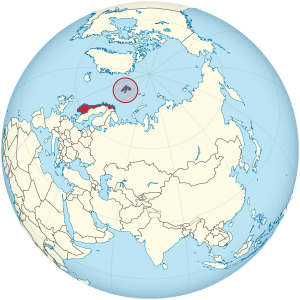 Svalbard Islands (Circled). Image Source: Wikipedia[/caption] India is a growing major power. It would like to be a significant player of any power structure that evolves in the Arctic region. It would also like to be part of the economic exploitation. India’s “ONGC Videsh” has been interested in investing in Russia’s Arctic Liquefied natural gas projects. [caption id=“attachment_11504671” align=“alignnone” width=“544”]
Svalbard Islands (Circled). Image Source: Wikipedia[/caption] India is a growing major power. It would like to be a significant player of any power structure that evolves in the Arctic region. It would also like to be part of the economic exploitation. India’s “ONGC Videsh” has been interested in investing in Russia’s Arctic Liquefied natural gas projects. [caption id=“attachment_11504671” align=“alignnone” width=“544”]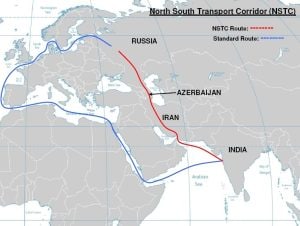 International North South Transport Corridor (INSTC). Image Source: Wikipedia.[/caption] India released its Arctic policy in March 2022. It was titled ‘India and the Arctic: building a partnership for sustainable development’. The policy enumerated India’s interests in scientific research, climate and environmental issues, economic and resource prospects, sea connectivity, and India’s presence in the region. India is also looking at the Arctic sea lanes for improving connectivity to certain northern destinations. Ideally India must connect with the Arctic sea routes using the already planned 7,200-km-long International North South Transport Corridor (INSTC) multi-mode network of ship, rail, and road routes. It would move freight between India, Iran, Azerbaijan, Russia, Central Asia and Europe. The results showed transport costs were reduced by $2,500 per 15 tons of cargo. Other routes under consideration include via Kazakhstan and Turkmenistan. Another option being explored is to have a Chennai-Vladivostok maritime corridor to reach closer to the Arctic. The way ahead Arctic continues to lure researchers to venture northwards to where “the next great game” seems evolving. Unlike Antarctica, Arctic states already have ownership over most of the areas through the Law of the Sea regime. Yet the discussions of great power politics, competition and conflict in the Arctic are increasingly engaging the strategic community. Russia’s Northern Fleet is strategically located covering the Arctic regions and has the most dominant position among all Arctic states. Interestingly, the US became an Arctic state because it had purchased Alaska from Russia for $7.2 million in 1867. Canada and Northern European states have a great stake and the U.S. will work closely with them. While China is claiming a “near-Arctic state” status, India is too far to make such claims. India would hope that intra-regional cooperation rather than conflict will flourish. But the global competition between the US, Russia and China is already becoming consequential. India must remain keenly engaged and keep a foothold in the Arctic. Its interests are more than just waiting and watching. The writer is Director General, Centre for Air Power Studies. Views expressed are personal. Read all the Latest News , Trending News ,
Cricket News , Bollywood News , India News and Entertainment News here. Follow us on
Facebook,
Twitter and
Instagram.
International North South Transport Corridor (INSTC). Image Source: Wikipedia.[/caption] India released its Arctic policy in March 2022. It was titled ‘India and the Arctic: building a partnership for sustainable development’. The policy enumerated India’s interests in scientific research, climate and environmental issues, economic and resource prospects, sea connectivity, and India’s presence in the region. India is also looking at the Arctic sea lanes for improving connectivity to certain northern destinations. Ideally India must connect with the Arctic sea routes using the already planned 7,200-km-long International North South Transport Corridor (INSTC) multi-mode network of ship, rail, and road routes. It would move freight between India, Iran, Azerbaijan, Russia, Central Asia and Europe. The results showed transport costs were reduced by $2,500 per 15 tons of cargo. Other routes under consideration include via Kazakhstan and Turkmenistan. Another option being explored is to have a Chennai-Vladivostok maritime corridor to reach closer to the Arctic. The way ahead Arctic continues to lure researchers to venture northwards to where “the next great game” seems evolving. Unlike Antarctica, Arctic states already have ownership over most of the areas through the Law of the Sea regime. Yet the discussions of great power politics, competition and conflict in the Arctic are increasingly engaging the strategic community. Russia’s Northern Fleet is strategically located covering the Arctic regions and has the most dominant position among all Arctic states. Interestingly, the US became an Arctic state because it had purchased Alaska from Russia for $7.2 million in 1867. Canada and Northern European states have a great stake and the U.S. will work closely with them. While China is claiming a “near-Arctic state” status, India is too far to make such claims. India would hope that intra-regional cooperation rather than conflict will flourish. But the global competition between the US, Russia and China is already becoming consequential. India must remain keenly engaged and keep a foothold in the Arctic. Its interests are more than just waiting and watching. The writer is Director General, Centre for Air Power Studies. Views expressed are personal. Read all the Latest News , Trending News ,
Cricket News , Bollywood News , India News and Entertainment News here. Follow us on
Facebook,
Twitter and
Instagram.
Amid growing competition between the United States, Russia and China, India must remain keenly engaged and keep a foothold in the Arctic
Advertisement
End of Article


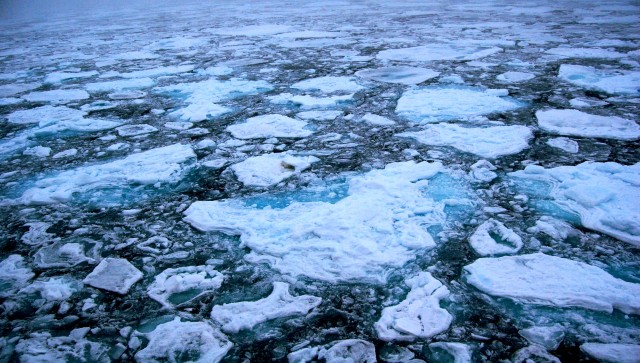)

)
)
)
)
)
)
)
)



